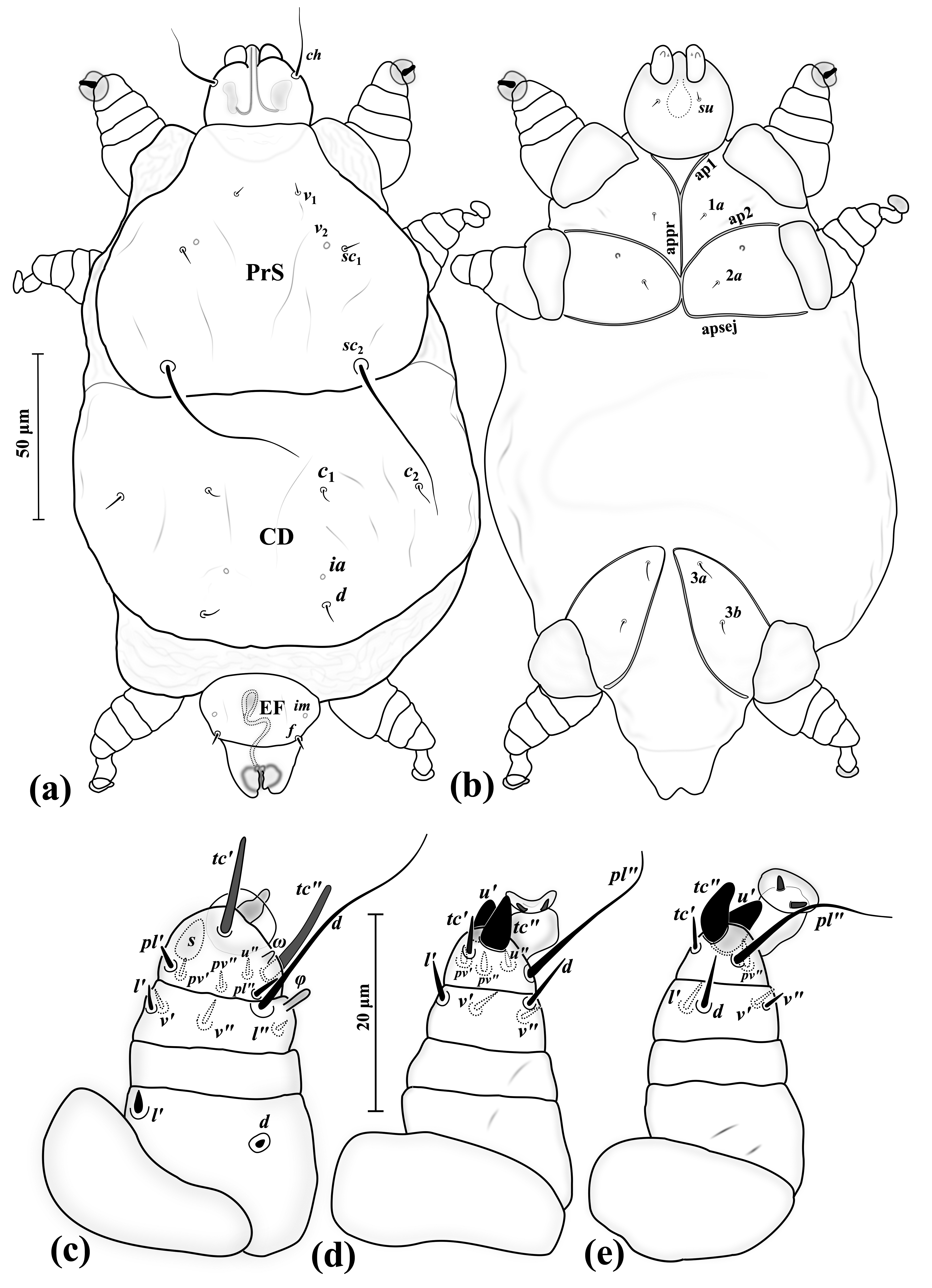|
Sphaerolichida
The Sphaerolichida is a suborder of mites belonging to the order Trombidiformes Trombidiformes is a large, diverse order of mites. Taxonomy In 1998, Trombidiformes was divided into the Sphaerolichida and the Prostigmata. The group has few synapomorphies by which it can be defined, unlike the other major group of acariform .... References *O'Connor, 1984 : '' 1. Speciation and evolution in Acari. 1.2 Phylogenetic relationships among higher taxa in the Acariformes, with particular reference to the Astigmata.'' In Acarology 6, Vol. 1. Griffiths & Bowman pp 19–27. External links {{Taxonbar, from=Q3493201 Trombidiformes Arthropod suborders ... [...More Info...] [...Related Items...] OR: [Wikipedia] [Google] [Baidu] |
Sphaerolichidae
Sphaerolichidae is a mite family in the suborder Sphaerolichida The Sphaerolichida is a suborder of mites belonging to the order Trombidiformes Trombidiformes is a large, diverse order of mites. Taxonomy In 1998, Trombidiformes was divided into the Sphaerolichida and the Prostigmata. The group has few sy .... References External links Trombidiformes Acari families {{acari-stub ... [...More Info...] [...Related Items...] OR: [Wikipedia] [Google] [Baidu] |
Trombidiformes
Trombidiformes is a large, diverse order of mites. Taxonomy In 1998, Trombidiformes was divided into the Sphaerolichida and the Prostigmata. The group has few synapomorphies by which it can be defined, unlike the other major group of acariform mites, Sarcoptiformes. Its members include medically important mites (such as ''Demodex'', the chiggers, and scrub-itch mites) and many agriculturally important species, including the spider mites (Tetranychidae). The superfamily Eriophyoidea, traditionally considered members of the Trombidiformes, have been found to be basal mites in genomic analyses, sister to the clade containing Sarcoptiformes and Trombidiformes. The 2004 classification retained the two suborders, comprising around 125 families and more than 22,000 described species. In the 2011 revised classification, the order now contains 151 families, 2235 genera and 25,821 species, and there were another 10 species with 24 species that present only as fossils. These 151 famili ... [...More Info...] [...Related Items...] OR: [Wikipedia] [Google] [Baidu] |
Mite
Mites are small arachnids (eight-legged arthropods) of two large orders, the Acariformes and the Parasitiformes, which were historically grouped together in the subclass Acari. However, most recent genetic analyses do not recover the two as each other's closest relative within Arachnida, rendering the group invalid as a clade. Most mites are tiny, less than in length, and have a simple, unsegmented body plan. The small size of most species makes them easily overlooked; some species live in water, many live in soil as decomposers, others live on plants, sometimes creating galls, while others are Predation, predators or Parasitism, parasites. This last type includes the commercially destructive ''Varroa'' parasite of honey bees, as well as scabies mites of humans. Most species are harmless to humans, but a few are associated with allergies or may transmit diseases. The scientific discipline devoted to the study of mites is called acarology. Evolution and taxonomy Mites are not ... [...More Info...] [...Related Items...] OR: [Wikipedia] [Google] [Baidu] |

